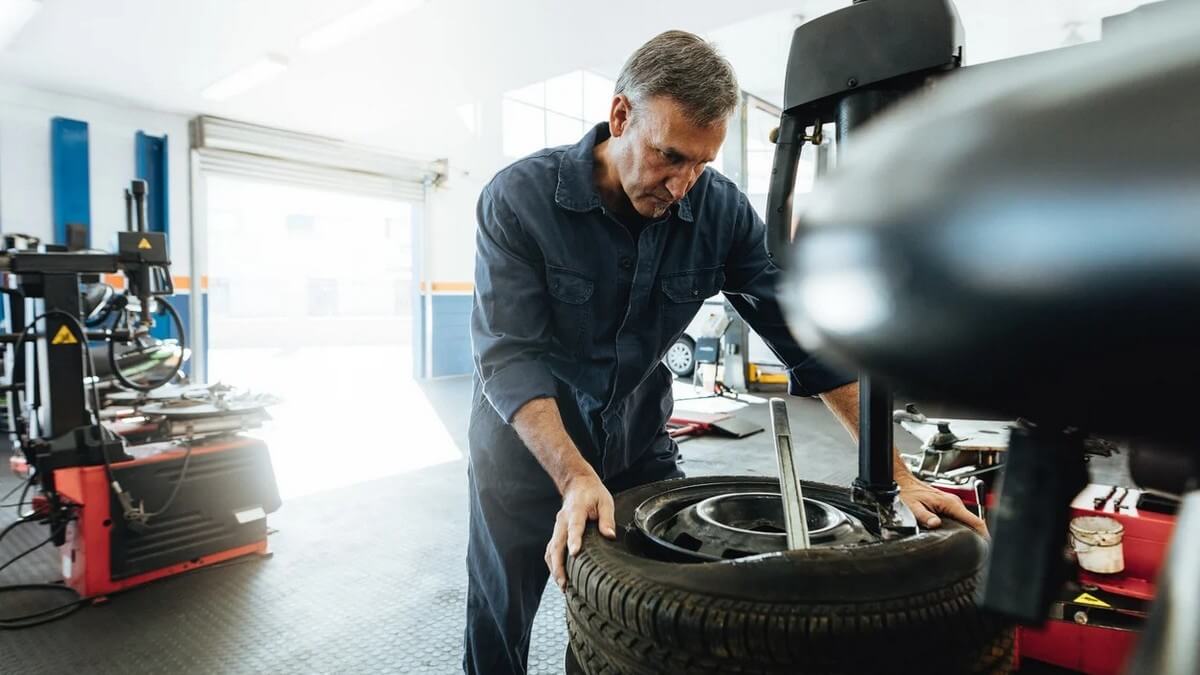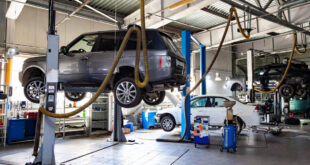Opening your own auto repair shop is a thrilling journey. It’s a path that blends technical skill with entrepreneurial spirit, catering to the ever-present need for vehicle maintenance and repair. As you step into this role, one of the most crucial elements to master is effective marketing. Because it’s not just about announcing your presence; it’s about strategically positioning your business in a way that resonates with your potential customers.
In this guide, we dive into a variety of marketing strategies, each specifically tailored to the unique needs of an auto repair shop. Our focus will be on practical, actionable steps that you can take to draw in customers, make a lasting impression in your community, and build a solid foundation for your business’s growth. Whether you’re a veteran mechanic or new to the field, these strategies are designed to be accessible and implementable, ensuring that your marketing efforts yield tangible results.
We will explore how to identify and connect with your target audience, the importance of establishing a strong and relatable brand, and the different online and offline channels through which you can effectively communicate your message. Additionally, we will touch upon the power of exceptional customer service and how it can be leveraged as a potent marketing tool.
Remember, successful marketing in the auto repair industry doesn’t require a massive budget or complex tactics. Often, the most impactful approach is one that is straightforward, authentic, and customer-focused. By the end of this article, you’ll have a comprehensive understanding of how to market your auto repair shop effectively, setting the stage for long-term success and customer loyalty.
Let’s gear up and get ready to accelerate your auto repair shop to new heights with smart, effective marketing strategies!
Understanding Your Target Market
Knowing your target market is the cornerstone of effective marketing. It’s like having a roadmap that guides you to make informed decisions about how to approach your customers, what services to offer, and how to communicate. Let’s break down the essentials of understanding your target market for your auto repair shop.
Identifying Your Ideal Customer
The first step is to identify who your ideal customer is. In the auto repair industry, customers can range widely – from individuals seeking regular maintenance for their personal vehicles to businesses needing fleet management services.
Start by asking yourself some key questions:
- What kind of vehicles are most common in my area? (e.g., family cars, high-performance vehicles, commercial trucks)
- Are my potential customers primarily individuals or businesses?
- What is the common age range and technical knowledge of my potential customers?
Once you have a clear picture of your ideal customer, tailor your services, marketing messages, and customer experience to meet their specific needs and preferences. For instance, if your shop is in an area with a high concentration of family vehicles, emphasize your expertise in routine maintenance and child safety features.
➤ Download all the repair manuals your shop needs here!
Analyzing Customer Needs and Preferences
Understanding your customers’ needs and preferences is vital in tailoring your services, communication, and offers to meet their demands. To gain insights into what your customers value and expect from an auto repair shop, consider conducting surveys or informal interviews. These interactions can reveal their past experiences, specific pain points, and preferences in auto repair services.
Additionally, keeping an eye on local trends and community preferences is just as crucial. For instance, if you operate in a region with harsh winters, there’s likely a high demand for specialized services in winterizing vehicles. This kind of observation can help you tailor your services to meet local needs effectively.
In today’s digital age, online tools and social media platforms are invaluable for understanding community chatter. They offer a window into the common issues and discussions surrounding vehicle maintenance and repair in your area. This online insight is essential for guiding both your service offerings and marketing approach.
Moreover, a thorough competitor analysis can provide a benchmark for success. Take the time to observe other successful auto repair shops in your area. Notice which services they offer that are particularly popular and think about how you can incorporate similar offerings into your business, but with a unique twist that sets you apart. Understanding what works for others in your industry can be a key step in refining your own service portfolio to better meet customer expectations.
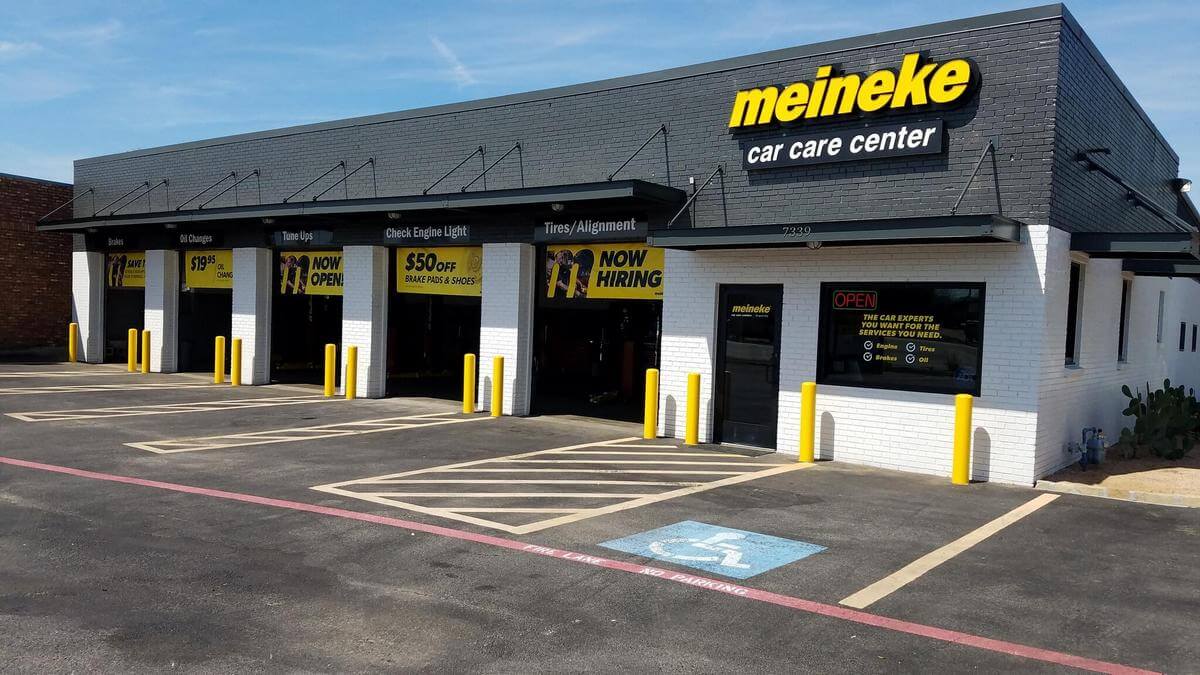
Building a Strong Brand Identity
A strong brand identity helps your auto repair shop stand out, builds trust, and creates an emotional connection with your customers. Here’s how you can craft and maintain a brand identity that resonates with your audience.
Crafting a Memorable Logo and Visuals
Your logo and visuals are often the first things potential customers will notice about your business. They should reflect the character of your auto repair shop and make a lasting impression.
For the logo, choose a design that is simple yet memorable. It could be something that symbolically represents auto repair, like a wrench or a gear, combined with your shop’s name in a clear, easy-to-read font. The color scheme should be appealing and reflect the personality of your business – professional, friendly, and reliable.
Beyond that, ensure that your visual branding (like uniforms, signage, business cards, and advertising materials) is consistent. Keep in mind, consistency helps in building a professional image and aids in brand recall.
Developing a Consistent Brand Voice
Your brand voice is how you communicate with your customers, both in writing and in speech. It should be consistent across all your marketing materials, social media, and customer interactions.
When deciding on your brand voice, consider the personality of your business and the preferences of your target market. If your primary clientele are young vehicle owners, for instance, a friendly and casual tone might resonate more effectively than a strictly formal one. Your brand voice could be friendly, authoritative, informative, or casual based on these considerations.
Once you have identified your brand voice, it’s important to implement it consistently across all facets of your business. This extends beyond marketing materials and into the realm of customer service. Training your staff to understand and use this brand voice ensures that customers receive a uniform experience whenever they interact with your shop. Whether it’s answering a phone call, responding to a social media post, or greeting a customer in person, the way your staff communicates should reflect the brand voice you’ve established. This consistency helps to build a recognizable and trustworthy brand identity.
Importance of Brand Consistency Across All Platforms
Maintaining a cohesive brand consistency across all platforms is essential for creating a unified experience for your customers. This uniformity is vital, whether customers are interacting with your business online, visiting your physical shop, or encountering your advertisements.
To achieve this, it’s important to synchronize your online and offline presence. This means your website, social media profiles, and the physical appearance of your shop should all feature your logo, utilize a consistent color scheme, and communicate in your brand voice. This uniformity across different platforms not only helps in reinforcing brand recognition but also builds trust among your customers. When your brand presents itself consistently, it becomes more recognizable and reliable in the eyes of your customers.
Additionally, it’s crucial to keep your marketing materials up-to-date. Regularly review and refresh your website, social media posts, brochures, and even the decor of your shop to ensure they align with your current brand identity. This ongoing process of updating and aligning your materials helps to maintain a fresh and consistent brand image, which is key to attracting and retaining customers. A brand that is consistently presented over time can increase its strength by up to 20%, according to Lucidpress’s 2019 report on brand consistency.
➤ Read more: Unlocking Customer Retention: 5 Proven Tactics for Your Auto Repair Shop
Online Marketing Strategies
Everything’s digital nowadays, and having a strong online presence is essential for any business, including auto repair shops. Effective online marketing can significantly increase your visibility, attract new customers, and build stronger relationships with existing ones. Here are some key online marketing strategies worth exploring.
Creating a User-Friendly Website
Your website is often the first point of contact between your auto repair shop and potential customers, so it’s important to make a great first impression. To ensure your website is effective, focus on its navigability, design, and mobile responsiveness. It should be straightforward for visitors to find what they’re looking for, whether that’s a list of services, pricing details, contact information, or a map of your shop’s location. Including customer testimonials can significantly enhance trust and credibility. Additionally, integrating an online booking system can provide a significant advantage by making it convenient for customers to schedule appointments.
Better yet, you can also use search engine optimization (SEO) to improve your website’s visibility in search engine results. This involves using relevant keywords, like “auto repair services [Your City],” to improve your site’s relevance in local search queries. Moreover, optimizing your site’s loading speed is crucial in retaining visitor interest, as slow-loading pages can lead to higher bounce rates. Regularly updating your website with helpful articles, tips, and fresh content not only keeps your site dynamic but also contributes to improved SEO performance.
Indeed, these updates can position your shop as a knowledgeable and helpful resource in the auto repair industry, thereby attracting more organic traffic.
Leveraging Social Media
Social media platforms are powerful tools for connecting with your community and promoting your services. These platforms can significantly enhance your shop’s visibility and engagement with potential and existing customers.
The key to effective social media use is identifying the platforms where your target customers are most active. For many auto repair shops, Facebook and Instagram prove to be effective choices. These platforms are particularly suited for sharing visual content, which is highly engaging in the auto repair industry. For instance, you can post before-and-after photos of your work, showcasing the quality and range of services you offer. Such visual storytelling not only highlights your expertise but also serves as a compelling testament to the results customers can expect.
Beyond just sharing images of your work, social media allows you to engage your audience with a variety of content. Consider sharing useful vehicle maintenance tips, success stories from your customers, special promotional offers, and behind-the-scenes looks at your shop’s daily operations. This kind of content not only provides value to your followers but also helps to humanize your brand, creating a more personal connection with your audience.
Engagement is also a critical aspect of social media marketing. Regularly interacting with your followers by responding to their comments and messages can foster a sense of community. This kind of active engagement helps to build trust and loyalty among your online audience, encouraging them to turn to your shop for their auto repair needs.
Email Marketing
Email marketing remains one of the most effective ways to reach out to customers and keep them informed about your business. It provides a direct line of communication to keep them informed about your business and services.
To build a robust email list, one effective strategy is to encourage customers to sign up by offering them incentives. These incentives could range from discounts on services to valuable information that they might find useful, such as tips for vehicle maintenance or industry insights. You can promote your email sign-up through various channels, such as your website, at your shop, or during any events you participate in. Making the sign-up process easy and highlighting the benefits of being on the list can significantly increase your subscription rate.
Once you have an established email list, the next step is to design effective email campaigns. The key to successful email marketing is balance — you want to keep your subscribers informed and engaged without overwhelming them with too much communication. Your emails can vary in content, including newsletters that provide updates about your business, special promotions exclusive to subscribers, reminders about regular vehicle maintenance, and any new services or products you are offering. It’s important to ensure that the content of each email is relevant, concise, and engaging, designed to provide value to the recipient.
This approach not only helps in maintaining the interest of your current customers but can also encourage them to share your content with others, potentially growing your customer base.
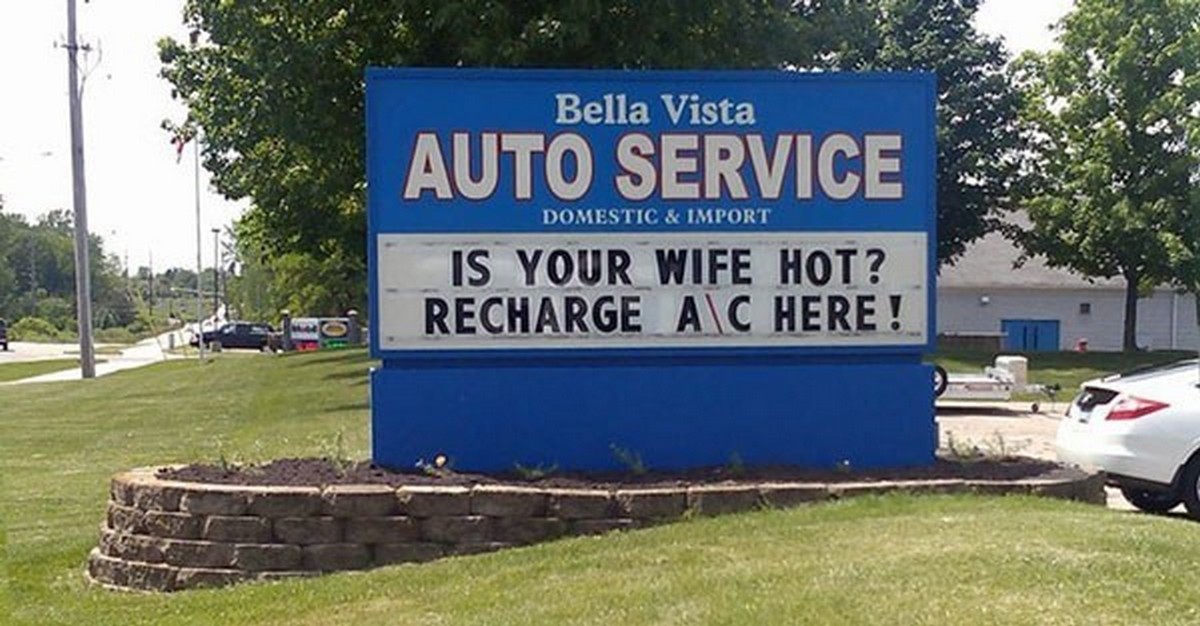
Offline Marketing Tactics
On the other hand, offline marketing tactics still play a vital role, especially in building local connections and reinforcing your brand presence. Here’s how you can optimize your offline strategies for your auto repair shop.
Local Advertising Strategies
Local advertising plays a crucial role in increasing the visibility of your auto repair shop within your community. It’s a strategy that allows you to connect directly with your local customer base and build a strong presence in your immediate area.
One effective approach to local advertising is to utilize print media, billboards, and flyers. Advertising in local newspapers and magazines or on billboards can capture the attention of potential customers as they go about their daily routines. Flyers also offer a tangible way to reach out to the community. When designing these materials, focus on creating eye-catching advertisements that clearly communicate the services you offer and the unique selling points of your shop. Placing these flyers in strategic locations such as local businesses, community centers, and car washes can increase their effectiveness, reaching a wider audience in your target area.
Another powerful aspect of local advertising is community engagement and involvement in local events. By participating in community events, sponsoring local sports teams, or hosting informative car care workshops, your shop can establish itself as an integral part of the community. This level of involvement is not just about advertising; it’s about building a relationship with your community. Such engagement can greatly enhance your shop’s reputation, leading to increased brand recognition and goodwill among the locals.
Building Partnerships with Local Businesses
Forging partnerships with other local businesses is a strategic move that can yield mutually beneficial relationships, contributing significantly to the growth and visibility of your auto repair shop.
Engaging in collaborations with local businesses, such as auto parts suppliers or car dealerships, can open the door to a variety of cooperative opportunities. These partnerships might manifest in several forms, including referral arrangements where each business recommends the other’s services, joint advertising campaigns that pool resources for broader reach, or cross-promotion opportunities that introduce your services to a new customer base. Such collaborations not only expand your network but also add value to your business by associating it with other reputable local entities.
Additionally, participating in local business networking events is another effective way to build partnerships. These events provide a platform to connect with other business owners in your community. The relationships forged at these gatherings can be invaluable, leading to referrals and new customer leads. Networking events allow you to introduce your business to a wider audience and establish connections that could evolve into collaborative opportunities in the future. They also give you a chance to learn about the local business landscape, understand the needs of the community, and identify potential areas for growth or collaboration.
Referral Programs
Referral programs encourage your existing customers to recommend your services to others, which essentially turns them into ambassadors for your brand.
The creation of a referral program involves designing a system that rewards your customers for bringing new clients to your shop. Consider what types of rewards would be most appealing and valuable to your customer base. These incentives might range from discounts on future services to complimentary car washes or other benefits that resonate with your clients. The key is to offer rewards that not only thank your customers for their referrals but also motivate them to continue spreading the word about your shop.
Once your referral program is in place, it’s important to ensure that your customers are well informed about it. Promoting the program effectively is crucial for its success. You can do this in various ways: display information about the program prominently in your shop, mention it during interactions with customers, and utilize your social media channels to spread the word. Additionally, incorporating details about the program in your direct communications, such as emails or text messages, can further increase its visibility.
➤ Read more: 10 Expert Tips & Tricks for Running a Successful Auto Repair Shop
Customer Service as a Marketing Tool
Exceptional customer service can be one of the most powerful marketing tools for your auto repair shop. It builds trust, encourages word-of-mouth referrals, and can set you apart from competitors. Here’s how to leverage customer service effectively.
Importance of Excellent Customer Service
Outstanding customer service creates memorable experiences that keep customers coming back and motivates them to share their positive experiences with others. That said, the essence of excellent customer service lies in several key practices:
Creating a Positive First Impression
This aspect of customer service begins the moment a customer interacts with your business, be it through a phone call, an email, or a direct walk-in. Training your team to be consistently friendly, welcoming, and attentive sets the tone for the entire customer experience. It demonstrates a commitment to customer satisfaction and sets a high standard for the level of service your customers can expect.
Addressing Customer Concerns
Another critical component is the effective and prompt addressing of customer concerns. When issues arise, the manner in which they are handled can significantly impact customer perceptions and loyalty. Resolving problems to the customer’s satisfaction can often transform a potentially negative experience into a positive one, fostering greater loyalty and trust. This approach not only helps in retaining customers but can also turn them into advocates for your business.
Follow-Up
Checking in with customers after a service to ensure their satisfaction shows that you value their business and feedback. This practice not only makes customers feel appreciated but also provides an opportunity to gather valuable insights that can be used to further improve your services. Follow-ups can be a simple, yet powerful tool in building lasting relationships with your customers.
Training Staff for Customer Interaction
The interactions between your staff and your customers are a fundamental aspect of the customer experience and can significantly impact the success of your auto repair shop. As such, the training and empowerment of your staff in customer interactions are crucial.
Providing professional training for your staff in customer service best practices is a key step. This training should encompass a range of skills including effective communication, strategies for handling difficult situations, and an understanding of the importance of each customer to the overall success of the business. Regular training sessions can equip your staff with the necessary tools and confidence to deliver exceptional service, ensuring that customer interactions are positive and productive.
In addition to training, empowering your employees is equally important. Allowing staff to make small, on-the-spot decisions to resolve customer issues can be incredibly effective. This empowerment not only increases efficiency in problem-solving but also significantly enhances customer satisfaction. When employees have the authority to address issues immediately, it reduces the time taken to resolve problems and demonstrates to customers that your staff are both capable and trusted.

Utilizing Customer Reviews and Testimonials
Customer reviews and testimonials are invaluable assets for your auto repair shop. They serve as social proof, building credibility and trust with potential customers. Let’s explore how to effectively collect and utilize these powerful marketing tools.
Encouraging Customers to Leave Reviews
Encouraging customers to leave reviews is an essential step in leveraging the power of customer feedback. Reviews not only provide valuable insights but also help in building credibility and trust with potential customers.
One effective way to encourage reviews is by training your staff to actively request them from satisfied customers. This request can be made at various touchpoints, such as at the end of a service, through follow-up emails, or via text messages. The key is to make this request a natural part of the customer interaction, particularly when the customer expresses satisfaction with the service provided.
Additionally, making the process of leaving a review as easy as possible is crucial. This can be achieved by providing direct links to your Google My Business profile, Yelp page, or other relevant review platforms. The fewer steps customers have to take to leave a review, the more likely they are to actually do it. You can include these links in email signatures, on receipts, or even as a part of your follow-up messages.
Another strategy to consider is incentivizing customers to leave reviews. This could be in the form of a small discount on their next service, a complimentary service, or another type of incentive that aligns with your business model. However, it’s important to approach this carefully. The incentive should be positioned as a token of appreciation for their time and feedback, rather than as a payment for leaving a review. This approach ensures that the integrity of the reviews is maintained and that they are seen as genuine and trustworthy by other customers.
Responding to Reviews – Positive and Negative
Managing your online reputation involves not just monitoring reviews but also actively responding to them, whether they are positive or negative.
Always thank customers for positive reviews. A simple, personalized response can enhance customer loyalty and encourage others to leave reviews. It also shows that you value and appreciate the time customers took to leave feedback.
Conversely, negative reviews also require your attention and a different approach. It’s important to respond to such reviews professionally and promptly. Acknowledge the customer’s concerns and offer to resolve the issue, preferably by taking the conversation offline. This might involve providing contact details for them to reach out to you directly. Addressing negative reviews in this manner demonstrates your commitment to customer satisfaction and shows that you take feedback seriously as a means of improving your service.
Showcasing Testimonials in Marketing Materials
Incorporating testimonials into your marketing materials is a good way to utilize the power of customer endorsements. These testimonials serve as persuasive, authentic proof of the quality and reliability of your services.
When selecting testimonials to showcase, it’s important to choose ones that are genuine and reflect various aspects of your service. Ideal testimonials are those that tell a story or share experiences to which potential customers can relate. They should resonate with the needs and desires of your target audience, demonstrating how your shop has successfully met similar needs in the past.
Once you have selected the right testimonials, consider how best to use them in your marketing efforts. Featuring them prominently on your website can significantly enhance its persuasive power. Including testimonials in your brochures and integrating them into your social media content can also be effective. These testimonials serve as social proof, building trust and credibility among potential customers.
Another creative way to display testimonials is by creating a ‘testimonial wall’ in your shop. This can be a designated space where printed testimonials are displayed, allowing customers to read about positive experiences while they wait. This not only reinforces the quality of your service to existing customers but also provides reassurance to new customers visiting your shop for the first time.
Additionally, if feasible, consider capturing video testimonials. Video brings a higher level of engagement and authenticity compared to written testimonials. They allow potential customers to see and hear firsthand accounts of the experiences others have had with your shop, adding a personal and relatable touch to your marketing.
Promotions and Loyalty Programs
Last but not least, promotions and loyalty programs can be powerful tools in attracting new customers and retaining existing ones for your auto repair shop. These strategies create excitement around your services and encourage repeat business. Here’s how to implement them effectively.
Designing Attractive Promotions and Offers
Well-crafted promotions can generate interest and bring new customers to your door. These promotions not only draw attention but also provide an incentive for potential customers to try your services.
The first step is to decide on the services or products you wish to highlight. This decision can be based on various factors such as seasonal needs or the introduction of new services. For instance, you might consider offering a discount on winter tire changes as the colder months approach, or promoting a new service with a special introductory offer. Seasonal offers align with the changing needs of your customers, making them more relevant and appealing.
Timing your offers in conjunction with seasons, holidays, or local events can also increase their effectiveness. A pre-summer checkup special, for example, aligns with the time when people are preparing for summer road trips. Similarly, offering a special discount during a local festival can capitalize on the increased community activity and spirit.
Just ensure your promotions are communicated clearly and effectively. It’s important that all promotional materials clearly outline the details and conditions of the offer to avoid any confusion. This information should be conveyed through various channels like your website, social media, email campaigns, and in-shop displays.
Creating a Loyalty Program that Works
A loyalty program rewards your repeat customers, encouraging them to continue choosing your shop for their auto repair needs. You can start by choosing the type of program that best suits your business and customer base. There are various formats to consider, such as point-based systems where customers accumulate points with each service, punch cards that track the number of visits, or tiered rewards that offer increasing benefits based on customer loyalty levels. The chosen program should be straightforward, both for you to manage and for your customers to understand and engage with. Simplicity and clarity are key to encouraging customer participation.
The rewards offered through the loyalty program should be compelling enough to motivate your customers. For example, you could offer a complimentary service after a certain number of visits or provide discounts on future services. Exclusive offers for loyalty program members, such as special pricing or early access to new services, can also be very appealing. The idea is to create a sense of value and appreciation for your repeat customers, making them feel rewarded for their loyalty.
Moreover, promoting your loyalty program effectively is crucial to its success. This can be achieved in various ways, such as mentioning the program at the point of sale, including information in your marketing materials, and discussing it during customer interactions. Training your staff to understand the program fully and to communicate its benefits to customers is also important. They should be able to explain how the program works and encourage customers to sign up.
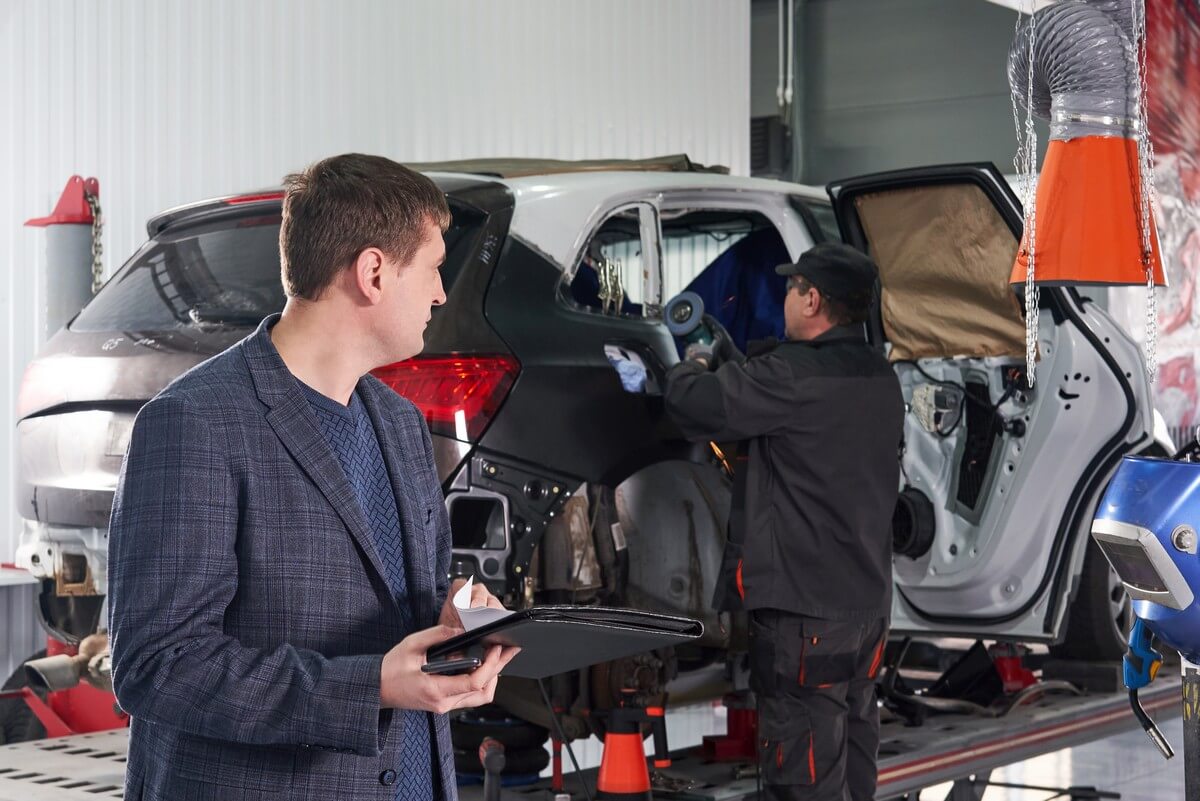
Measuring the Effectiveness of Your Marketing Strategies
To ensure that your marketing efforts are paying off, it’s essential to measure their effectiveness. This process helps you understand what’s working, what’s not, and where you can make improvements. Here’s how you can effectively track and evaluate your marketing strategies.
Setting Realistic Marketing Goals
Setting realistic marketing goals is a fundamental step in determining the success of your marketing efforts for your auto repair shop. These goals provide a clear direction and a benchmark for measuring the effectiveness of your strategies.
Start by defining clear and specific objectives for your marketing campaigns. These objectives should be quantifiable, allowing you to track progress and measure outcomes effectively. For instance, your goals could range from increasing the number of service appointments booked through your website to boosting your website traffic or growing your follower count on social media platforms. The key is to choose goals that are relevant and attainable, providing a focused target for your marketing efforts.
It’s also important to ensure that these marketing goals are in alignment with your broader business objectives. For example, if one of your primary business goals is to increase repeat customer visits, then your marketing objectives should include strategies focused on customer retention. This alignment ensures that your marketing efforts are not only targeted but also contribute to the overall growth and success of your business.
Additionally, setting a realistic time frame for achieving your marketing goals is crucial. This timeframe should be practical, allowing enough duration for your strategies to be implemented and for results to manifest. Whether it’s over a few months or a year, a defined timeframe helps in planning and evaluating the progress of your marketing initiatives. It also allows you to make timely adjustments if certain strategies are not yielding the expected results, ensuring that your marketing remains dynamic and responsive to your business needs.
➤ Read more: The Most Essential Tools and Equipment for Your Auto Repair Shop
Tools and Metrics for Tracking Success
There are various tools and metrics you can use to track the effectiveness of your marketing strategies.
Website Analytics
For your online presence, website analytics are invaluable. Tools like Google Analytics offer a comprehensive view of your website’s performance, including traffic, user behavior, and conversion rates. This data provides insights into how visitors interact with your site, which pages attract the most attention, and how effectively you’re converting visits into tangible actions like service bookings or inquiries. Understanding these metrics can inform decisions on how to optimize your website for better engagement and higher conversion rates.
Social Media Analytics
Social media analytics are also critical in measuring the impact of your marketing on platforms like Facebook and Instagram. These platforms offer built-in analytics tools that provide information on post engagement, audience growth, and the overall reach of your content. By analyzing this data, you can identify which types of posts resonate most with your audience, the best times to post, and how to adjust your social media strategy for improved engagement and visibility.
Customer Feedback and Surveys
Regular collection of feedback, whether through surveys, feedback forms, or direct conversations, offers valuable insights into customer perceptions and experiences. This feedback can highlight areas of success and identify aspects of your marketing that may need adjustment. It’s a direct line to customer thoughts and opinions, providing a clear picture of how your marketing strategies are received by your target audience.
At a Glance
| Tool | Metrics Tracked | Purpose/Use-Case | Cost | Ease of Use | Recommended Frequency of Review |
|---|---|---|---|---|---|
| Google Analytics | Website traffic, page views, user behavior, conversion rates | Website performance analysis, user engagement | Free (with premium options) | Intermediate (requires some analytical skills) | Weekly |
| Social Media Analytics (Facebook, Instagram) | Post engagement, audience growth, reach | Social media performance, audience engagement | Free (part of platform) | Easy (intuitive dashboards) | Bi-weekly |
| Email Marketing Tools (e.g., Mailchimp) | Open rates, click-through rates, subscriber growth | Email campaign effectiveness, audience engagement | Freemium (Free up to a certain number of subscribers) | Easy to Moderate (template-based with customization options) | After each email campaign |
Adjusting Strategies Based on Performance
Flexibility and adaptability are crucial components of successful marketing. Being willing and prepared to adjust your strategies based on their performance can significantly enhance the effectiveness of your marketing efforts.
One important practice is to review the results of your marketing strategies regularly. This involves setting aside time to analyze the data and insights gathered from your various marketing tools and channels. During these reviews, assess whether your current approach is achieving the desired results or if there are areas that need improvement. This ongoing evaluation process helps ensure that your marketing remains relevant and effective.
Experimentation is also a key part of refining your marketing strategies. If certain tactics are not performing as well as expected, don’t hesitate to try new approaches. Marketing is a dynamic field that often involves trial and error. By experimenting with different tactics, you can discover what truly resonates with your audience. This could involve exploring new marketing channels, testing different types of content, or adjusting your messaging to better align with your audience’s preferences.
Always remember to use the insights gained from tracking and analyzing your marketing efforts to make informed decisions about how to evolve your strategies. This may include refining your messaging, exploring new promotional tactics, or even redefining your target audience. The goal is to keep learning and adapting, ensuring that your marketing strategies stay aligned with customer needs and industry trends, thereby driving the growth and success of your auto repair shop.
Frequently Asked Questions (FAQs)
Q: How can I determine the most effective marketing channels for my auto repair shop?
Identifying the most effective marketing channels involves understanding your target audience and where they spend their time. Start by analyzing your current customer base to see how they found out about your shop.
Use tools like surveys or feedback forms to gather this information. Additionally, keeping track of engagement and conversion rates from different marketing channels (like social media, email marketing, local advertising) will give you insight into what’s working best. Regularly reviewing and adjusting based on these metrics is key to finding the most effective channels for your shop.
Q: Is social media marketing essential for auto repair shops, and which platforms should I focus on?
Social media marketing is increasingly essential for businesses, including auto repair shops, due to its vast reach and ability to engage directly with customers. The choice of platform should be based on where your target customers are most active.
For most shops, Facebook and Instagram are effective because they allow for visual content like before-and-after photos of repairs, promotional posts, and customer engagement through comments and messages. However, if your target audience is more professional or business-oriented, platforms like LinkedIn could also be considered.
Q: How often should I update my marketing strategies?
Marketing strategies should be dynamic and flexible, adapting to changes in customer behavior and market trends. A good practice is to review your marketing strategies quarterly. This doesn’t always mean a complete overhaul but rather making adjustments based on what the data is showing. For example, if you notice a particular type of social media post is getting more engagement, you might decide to create more content in that style.
Q: What are some low-cost marketing ideas for small auto repair shops?
For small auto repair shops operating on a tight budget, several low-cost marketing strategies can be highly effective, such as:
- Engaging with the local community through sponsorships of local sports teams or community events
- Utilizing social media platforms
- Encouraging word-of-mouth referrals by providing exceptional service
- Partnerships with other local businesses
Q: How important are customer reviews, and how can I encourage my customers to leave them?
Customer reviews are extremely important as they provide social proof and build trust with potential customers. To encourage reviews, make the process as simple as possible by providing links to your review pages in follow-up emails or texts.
Consider asking for reviews in person when customers are pleased with their service. While offering incentives can be effective, ensure they comply with the guidelines of review platforms. Also, responding to all reviews online, both positive and negative, shows that you value customer feedback and are committed to improving your service.
Final Words
As we wrap up our talk about marketing for auto repair shops, it’s really important to remember one thing: the best marketing plan isn’t just about lots of fancy strategies. It’s actually about giving the best service you can.
In the auto repair business, doing great work on cars and being honest and friendly with your customers is the best kind of advertising. When your customers are happy, they’ll tell their friends and family about how great you are. This word-of-mouth is a super powerful way to get more customers. It’s real and honest, and people trust it.
Every time you fix a car, talk to a customer, or help someone out, you’re showing how good your shop is. By always doing your best work, you make your customers happy. They keep coming back, and they bring new customers with them.
In the end, the way you treat your customers and the quality of your work is the best way to market your shop. Keep that as your main focus, and you’ll see your business grow, mostly because your customers will bring their friends!
➤ Download 2.5M+ car repair manuals here!


